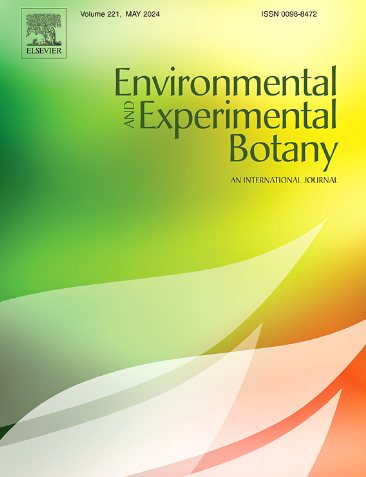Zn induced modifications in cell wall structure and lignin biosynthesis pathways improving cadmium tolerance in barley
IF 4.7
2区 生物学
Q2 ENVIRONMENTAL SCIENCES
引用次数: 0
Abstract
Cadmium (Cd) contamination in soil threatens global food production and human health. This study investigated zinc (Zn) addition as a potential strategy to mitigate Cd stress using two barley genotypes, Dong-17 (Cd-sensitive) and WSBZ (Cd-tolerant). Hydroponically grown seedlings were treated with different Cd (0, 1.0, 10 μM) and Zn (0, 5, 50 μM) levels. Results showed that Zn addition effectively alleviated Cd induced growth inhibition, improving SPAD values, photosynthetic parameters, fluorescence efficiency (Fv/Fm), and biomass. Zn reduced Cd contents in roots and shoots, inhibited Cd translocation, and ameliorated Cd induced ultrastructural damage to organelles. Transcriptomic analysis revealed distinct gene expression patterns between genotypes, with WSBZ showing enhanced expression of metal transporters, antioxidant defense, and stress signaling genes. Significantly, cell wall related pathways were upregulated in WSBZ, particularly lignin biosynthesis genes (PAL, C4H, 4CL, COMT, CAD/SAD), suggesting cell wall reinforcement as a key Cd tolerance mechanism. Zn induced upregulation of ZIP family transporters and downregulation of Cd transporters (HvHMA) aligned with reduced Cd accumulation. These findings provide comprehensive insights into molecular mechanisms of Zn mediated alleviation of Cd toxicity in barley, supporting improved agronomic practices for Cd contaminated soils.
锌诱导大麦细胞壁结构和木质素生物合成途径的改变,提高其耐镉性
土壤中的镉污染威胁着全球粮食生产和人类健康。本研究利用Dong-17 (Cd敏感型)和WSBZ (Cd耐受型)两个基因型,研究了锌(Zn)添加作为缓解Cd胁迫的潜在策略。以不同Cd(0、1.0、10 μM)和Zn(0、5、50 μM)处理水培苗。结果表明,添加Zn可有效缓解Cd诱导的生长抑制,提高SPAD值、光合参数、荧光效率(Fv/Fm)和生物量。锌降低了根和芽中Cd含量,抑制了Cd的转运,改善了Cd对细胞器的超微结构损伤。转录组学分析揭示了不同基因型之间不同的基因表达模式,其中WSBZ表现出金属转运蛋白、抗氧化防御和应激信号基因的表达增强。值得注意的是,WSBZ细胞壁相关通路上调,特别是木质素生物合成基因(PAL, C4H, 4CL, COMT, CAD/SAD),表明细胞壁强化是Cd耐受的关键机制。锌诱导ZIP家族转运蛋白上调和Cd转运蛋白下调(HvHMA),这与镉积累减少一致。这些发现为锌介导的大麦减轻镉毒性的分子机制提供了全面的见解,为改进镉污染土壤的农作措施提供了支持。
本文章由计算机程序翻译,如有差异,请以英文原文为准。
求助全文
约1分钟内获得全文
求助全文
来源期刊

Environmental and Experimental Botany
环境科学-环境科学
CiteScore
9.30
自引率
5.30%
发文量
342
审稿时长
26 days
期刊介绍:
Environmental and Experimental Botany (EEB) publishes research papers on the physical, chemical, biological, molecular mechanisms and processes involved in the responses of plants to their environment.
In addition to research papers, the journal includes review articles. Submission is in agreement with the Editors-in-Chief.
The Journal also publishes special issues which are built by invited guest editors and are related to the main themes of EEB.
The areas covered by the Journal include:
(1) Responses of plants to heavy metals and pollutants
(2) Plant/water interactions (salinity, drought, flooding)
(3) Responses of plants to radiations ranging from UV-B to infrared
(4) Plant/atmosphere relations (ozone, CO2 , temperature)
(5) Global change impacts on plant ecophysiology
(6) Biotic interactions involving environmental factors.
 求助内容:
求助内容: 应助结果提醒方式:
应助结果提醒方式:


